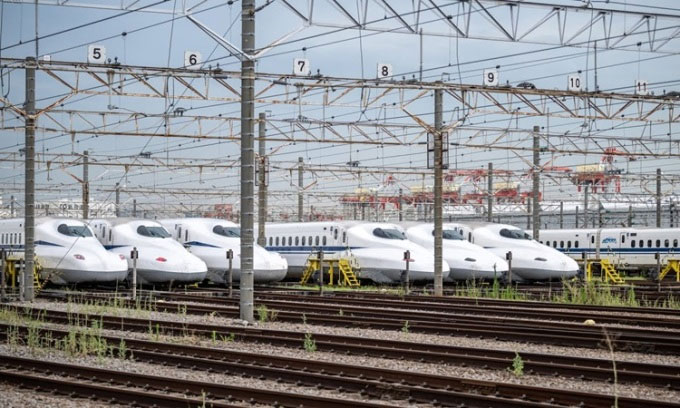Japanese bullet train accident-free for 60 years
Shinkansen trains have not caused any fatalities or injuries since they began operating, and the average delay is less than 5 minutes.
The Shinkansen bullet train began running between Tokyo and Osaka on October 1, 1964, ushering in a new era for rail travel as Japan emerged as an economic superpower after World War II. The service remains an integral part of the country's economy and daily life, so keeping it shiny, punctual and accident-free is serious business.

Shinkansen trains have a maximum speed of 320km/h. (Photo: Shahjah 24).
Every day, nearly 250,000 passengers travel on the Tokaido Shinkansen, which runs from Tokyo over Mount Fuji to Hakata, about a five-hour train ride away. Trains arrive at stations every five minutes on schedule. The operator, JR Central, says the Shinkansen has never caused a fatal accident or injury , even as Japan experiences frequent earthquakes, typhoons and heavy snowfall. "Safety is our top priority. So we train our staff very carefully," said Daisuke Kumajima, a public relations officer for JR Central. For the first time this month, on another line operated by JR East, two connected bullet trains separated, forcing an emergency stop but causing no injuries.
With routes spanning the entire country, the Shinkansen's top speed of 320km/h is no longer the world's fastest, having been surpassed by China. But the original high-speed model's tapered nose and spacious interiors remain a symbol of Japan's technological prowess and attention to detail. Meticulous maintenance schedules mean the trains are kept sparkling inside and out, with cleaners adjusting headrests and using brushes to ensure seats are free of debris. On the bullet train network, delays average less than five minutes.
The growth of cities along the Shinkansen's route over the past several decades reflects its impact on the Japanese economy, according to Christopher Hood, a researcher at Cardiff University in the UK. The bullet train has also played a key role in depopulating rural Japan. People prefer to live in big cities, then take the Shinkansen to visit relatives in smaller towns if necessary.
At a JR Central facility, engineers tap on machinery inside bullet trains, listening closely for any unusual sounds that might reveal loose parts. Amid labor shortages due to an aging population, the company is also working on a new digital inspection system that can analyze images of trains and spot hazards.
Meanwhile, JR East says driverless bullet trains could be introduced in the mid-2030s. It is undertaking a major project to build high-speed maglev trains in Japan. The maglev, which can travel at speeds of 500 km/h, was originally scheduled to operate between Tokyo and Nagoya in central Japan in 2027, but JR Central has pushed that back to 2034. The aim is to create a dual system with the Shinkansen, to meet demand and maintain stable operations in the event of maintenance or a major earthquake.
- Japan tested the world's fastest 'bullet-shaped' ship, up to 400km / h
- China develops 400 km/h bullet train
- Video: China tested high-speed bullet train 350km / h
- Japan introduces prototype wireless charging super speed train
- High-speed shipyard is as wide as 248 football fields in China
- Europe opens a tunnel to test 1,000km/h high-speed trains
- It can only be Japan: The train knows how to fake dogs and deer to prevent accidents
- The bizarre bullet that shot out 20 years to hit the target
- Japan launches Maglev 'Speedier bullet'
- China's fastest train maker in the world
- MP3 player 'bullet shot without puncture'!
- Nishimura Masanari - a very Vietnamese Japanese
 'Fine laughs' - Scary and painful torture in ancient times
'Fine laughs' - Scary and painful torture in ancient times The sequence of numbers 142857 of the Egyptian pyramids is known as the strangest number in the world - Why?
The sequence of numbers 142857 of the Egyptian pyramids is known as the strangest number in the world - Why? History of the iron
History of the iron What is alum?
What is alum?